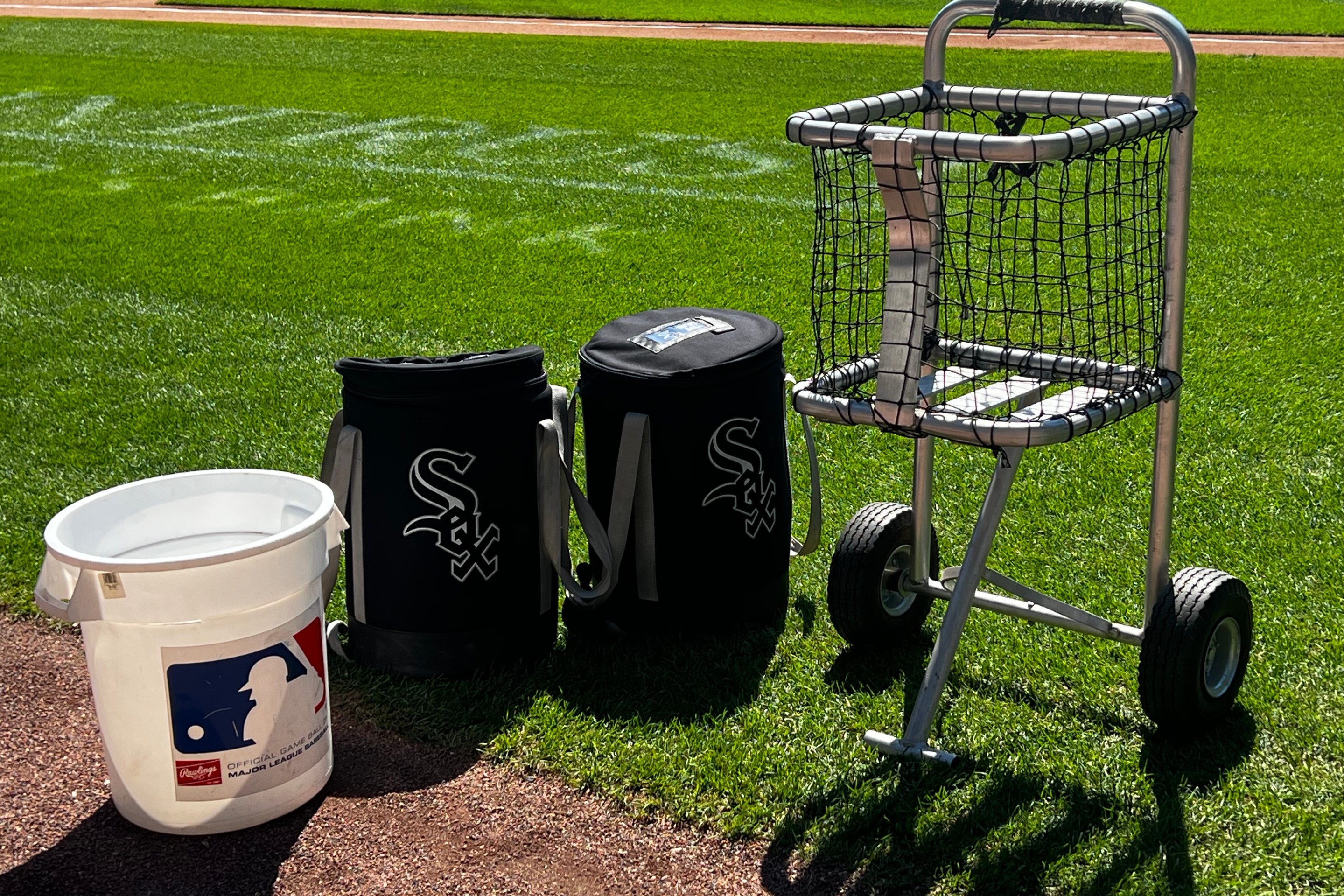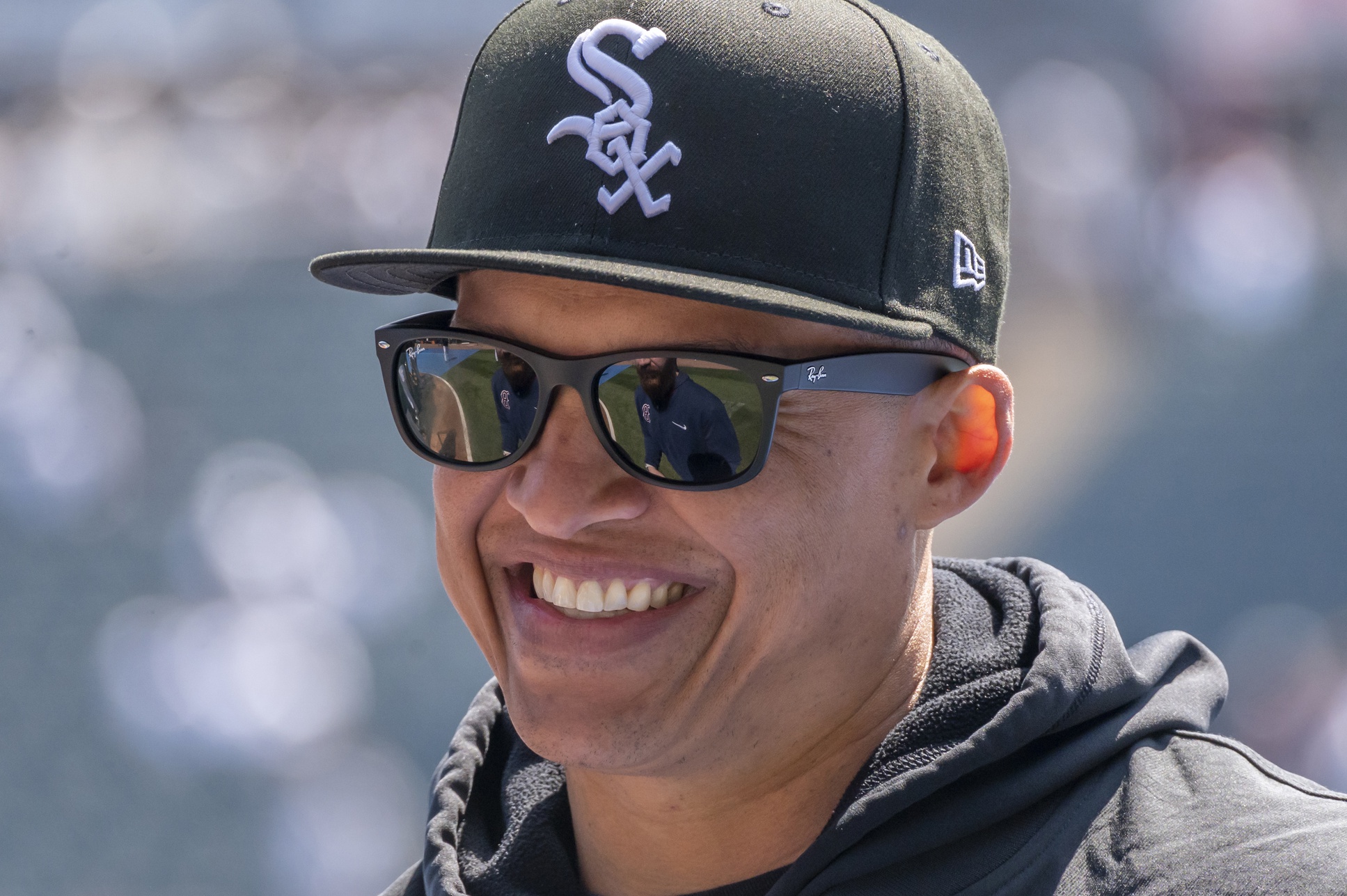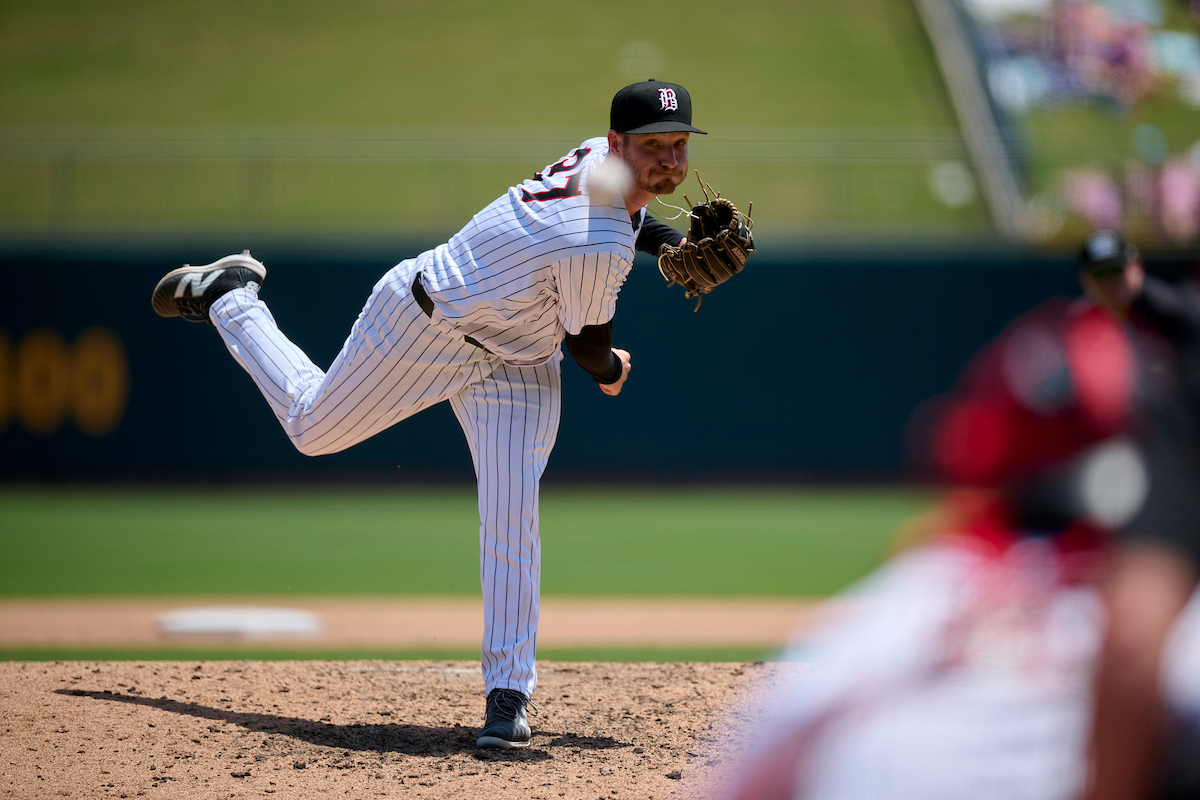On Monday's episode of the Sox Machine Podcast, Josh and I discussed Lucas Giolito's struggles, and I tried to sum up what I thought was plaguing the White Sox's erstwhile ace. It's easy to diagnose the symptoms -- he's missing fewer bats and getting hit harder -- but it's tougher to explain why his fastball-changeup approach isn't getting the job done right now. The Red Sox might've been sitting on Giolito's changeup on Patriots Day, but I doubt they were the first team to try that tack. He's a two-pitch pitcher who once threw the Tigers eight consecutive changeups, so there are only two real permutations to attempt.
My best guess is that while Giolito's fastball velocity is down a little (0.6 mph), his changeup has crept up a little (0.7 mph), and while it doesn't seem like much to go from a 13-14 mph difference to 11-12, it might be just the margin hitters need to fight off a high fastball while waiting for something softer, and not having to wait as long when that offspeed offering arrives.
While that's more precise, that's still describing a result of a pitch. For an attempt at establishing a cause, I'll point to this post on PitcherList by Michael Ajeto. He notes that nothing is wrong with the shape of Giolito's pitches, but a lower release point might be making his vertically oriented approach to the strike zone more approachable to hitters.
Here, it’s evident that Giolito’s release point has drifted to his arm-side, but it’s also dropped down by a few inches too. That indicates that this is probably less about Giolito’s position on the rubber, and much more about his arm slot, which has dropped. It might feel minor, but it leads me to believe that this has had an effect on the way that Giolito’s pitches behave.
Generally speaking, the more on the side of the ball you get, the more side-to-side movement you get. Pitchers on the extremes often locate east-west. Get on the top of the ball, and your pitches start looking more like James Karinchak‘s. Those pitchers locate north-south, like Giolito historically has. If you consider the spin direction of Giolito’s pitches in the format of a clock, all of them have shifted clockwise. Giolito’s fastball hasn’t changed much, but his changeups (yes, plural!), have gotten more arm-side movement, and a little more drop. His slider, though, has dropped pretty drastically.
This explanation would cover why he doesn't like his slider even when the situation demands that he throws it. It also explains why the slightest of velocity drops and narrowing of speed between his fastball and changeup could have a pronounced effect.
A lot of Giolito's dominance has been built on pairing a short armswing with a long-armed release from a high position, creating the effect as though he's conking hitters on top of the head. His fastball and changeup don't have the typical drop, which is why you saw so many hitters swinging underneath low-80s floaters that would typically look like a bad fastball from a pitching position player. If both pitches look a little bit more normal and he doesn't trust his slider? Sitting on the changeup is still something easier said than done, but it's easier to do than it was before.
* * * * * * * * *
PitcherList also took a look at Dylan Cease's improvements, although it's not as digestible. Cease makes it hard on a writer because he was a peculiar kind of bad before. He left many avenues for improvement, and he's pursuing just about all of them this season. Zach Hayes points to Cease's more effective spin on his fastball, resulting in dramatically more carry. That makes his fastball harder to sit on alone, but it works even better when his slider and curve are more competitive. And those sliders and curves are being located better, sure, but they also have more distinct breaks on them. It's a lot to cover, especially if you have to explain why it wasn't working before.
Hayes only briefly touched on Cease's changeup, but that's also a pitch that's morphing before our eyes. Look at the velocity separation between his fastball (red) and changeup (green) over the course of the young season:
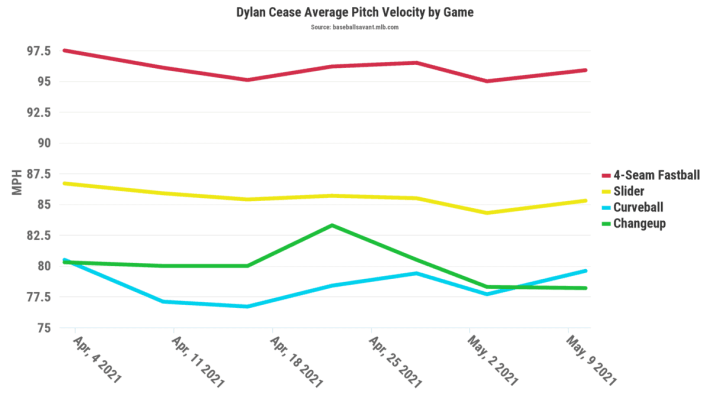
It hasn't been worth focusing on Cease's changeup in the past because Cease will ignore it when he has the luxury. He threw it 13 percent of the time last year, but its usage spiked toward 20 percent and above in outings where he issued more than a walk an inning. You know the starts -- Cease can't throw anything spinning for a strike, so he needs a non-fastball he can put in the zone, so, well changeup, I guess it's me and you. Desperate measures reflect the desperate times.
Because Cease's control issues haven't been as severe this season, he hadn't really reached for the changeup. He threw a total of 29 over his first five starts, making it a distant fourth in his arsenal.
But Cease has nearly matched that total over his last two starts, throwing 14 against the Reds on May 4, and following up with 12 against the Twins on Tuesday. In both starts, he subtracted two whole ticks from the average velocity, averaging 78 mph both times out. That's a gap of 17-18 mph from his fastball, and it reached new heights/depths on Tuesday.
Take this sequence to Jorge Polanco, the final batter Cease faced over his five innings. Cease came at Polanco with fastballs in their first battle of the night, and Polanco found his timing in time for a mistake, ripping a solo shot into the Minnesota bullpen. With two on and two outs, Cease made sure to follow up each fastball with something un-fast.
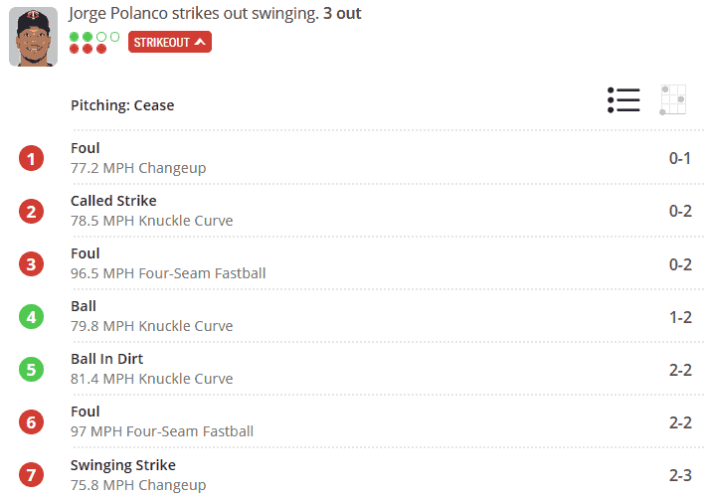
That's the slowest changeup Cease has ever thrown, a 21-mph departure from the pitch that came before. Polanco couldn't wait back long enough, and Cease escaped a jam to keep the game tied.
Cease's changeup is way softer than it was before and it has more armside run. The combination gives him the kind of confidence to throw one with two strikes to Nelson Cruz of all people (Cease missed in a good direction). He feels good about it ...
... and he should feel good, because he's being rewarded for throwing it a little more.
| Date | Total | % | Swings | Whiffs | Called | EV |
|---|---|---|---|---|---|---|
| May 11 | 14 | 14.4 | 7 | 4 | 1 | 77.1 |
| May 4 | 12 | 12.2 | 2 | 2 | 5 | -- |
| April 29 | 3 | 3.3 | 0 | 0 | 1 | -- |
| April 23 | 6 | 7.5 | 1 | 1 | 1 | -- |
| April 17 | 6 | 7.1 | 5 | 1 | 0 | 82.5 |
| April 11 | 11 | 12.2 | 3 | 0 | 2 | -- |
| April 4 | 3 | 3.3 | 0 | 0 | 2 | -- |
I could've devoted a post to his changeup usage after his start against the Reds, because he started throwing this flutterer with conviction the third time through. See the called strike column? He grabbed first-pitch strikes with it twice in the fifth inning, and once to Joey Votto in the sixth.
Yet it wasn't a mere novelty. Just like he did with Polanco, Cease opened and closed his at-bat to Votto with his changeup, and was rewarded with a backwards K for his effort. The speed fooled him more than the location.
Looking at the early returns, I'm curious to see what Cease can do with this pitch, especially in games where his slider and curveball aren't much of a threat. Perhaps Cease has advanced enough mechanically that he's seldom resigned to writing off his breaking balls, which leaves this super-slow changeup as a wrinkle he can keep in his back pocket more often than not. That's also useful, because after watching him labor through starts that didn't last five innings his first four times out, nobody needs to overexplain the usefulness of having a pitch he can locate for strikes a third time through the order. And if Cease is reliable for three times through, he himself becomes especially useful while Giolito tries to get himself straightened out.
(Photo by Quinn Harris/USA TODAY Sports)

